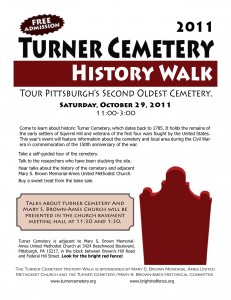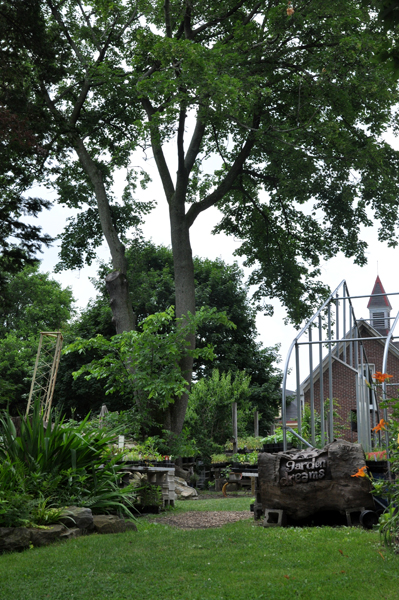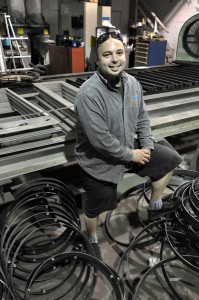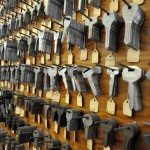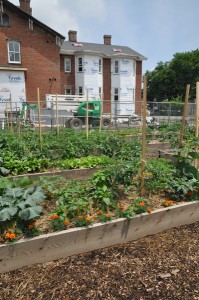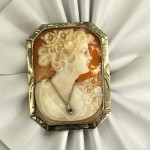
Category Archive: News Wire Services
-
“My Tale of Two Cities,” Showing at Dormont’s Hollywood Theater, Friday October 21, 2011
This “funny and hopeful” Pittsburgh Comeback Story returns home at 7 p.m. on Friday, October 21, 2011, for a special screening at Dormont’s Hollywood Theater.
-
Cemetery History Walk on October 29
-
The Insider Guide to Wilkinsburg
Anne Caffee | Wednesday, July 27, 2011Many in Wilkinsburg credit the Wilkinsburg Community Development Corporation for helping to drive this spirit of optimism. The WCDC was organized in 2007 to attract investors and entrepreneurs to its main commercial district on Penn Avenue.Its energetic and tenacious executive director, Tracey Evans, knows that Wilkinsburg’s success will be built brick by brick. “We are working hard to lay the right foundation for a more successful business district,” she says.Evans, a 25-year resident of Wilkinsburg, is in her fifth year as an elected member of the borough council, and chairs the Wilkinsburg Municipal Authority and Wilkinsburg Borough Commercial and Industrial Development Authority. She started out as a freelance set designer for Pittsburgh stage productions, and got involved as a volunteer in a number of local restoration projects. A graduate of Point Park University, her career in community revitalization took flight when she became the first executive director of the Wilkinsburg Community Development Corporation, which she helped found.
Now, in addition to overseeing the execution of a 6-year $1.8 million Neighborhood Partnership Plan for Wilkinsburg, funded by Tri-State Capital Bank and the Pennsylvania Department of Community and Economic Development, and developed with input from the borough, residents, and the business community, the WCDC is deep in the first phases of Streetscape Improvement Program to revamp the Penn Avenue corridor.
The first phase of the Program’s investment has provided tree pruning, 80 decorative streetscape banners, and locally fabricated trash receptacles designed by Technique Architectural Products, whose owner, Ray Appleby, is a CMU-trained sculptor. (His shop has outfitted Mad Mex locations with some cool metal work).
A recent grant through TreeVitalize Pittsburgh and the Borough of Wilkinsburg will put in place 500 new street trees, all to be planted by Nine Mile Run Watershed Association and volunteers on public property. A grant from Duquesne Light helped refurbish existing streetlights and create a well-lit and safer corridor while the Wilkinsburg Police Department has re-established a walking police presence along the business district.
“Our primary focus is crime and safety issues,” states Evans, “along with enforcement of building codes, loitering and littering laws. Our beautification work will also help attract business and investment back to Wilkinsburg.”
Some of Wilkinsburg’s old and architecturally gifted homes in the Hamnett Place neighborhood have been restored through the efforts of the Pittsburgh History and Landmarks Foundation (PHLF). Their Wilkinsburg redevelopment projects have successfully restored four homes in the Hamnett Place neighborhood; work on three more historic homes, and the two-building, 27-unit Crescent Apartment development, are scheduled for completion by the end of this year.
PHLF launched a housing resource center, and has cleaned and cleared vacant lots, “Initiatives taking place right now in Wilkinsburg total over $10 million,” says Michael Sriprasert, PHLF director of real estate.
Urban Homesteading: finding your match
For the socially progressive, frugal and urban-focused homeowner not afraid to get his/her hands dirty, Wilkinsburg is the right match: racially/ethnically diverse, close to the city and fuel-efficient: eight-minutes’ drive to downtown, close to urban programs and amenities and public transportation (access to the East Busway can get anyone downtown within 20 minutes) and within a fifteen-minute drive of four city neighborhoods, the Waterfront, and Monroeville.Wilkinsburg offers eye-poppingly affordable real estate for urban homesteaders and entrepreneurs who can spot an architectural gem beneath the overgrowth, and are willing to put in sweat equity to polish it up. (One business owner bought a parcel of land on a credit card).
Resident Chad Chalmers, an architect and member of the WCDC’s design committee,spotted a typical diamond-in-the-rough on an overgrown lot: six-bedroom, three-bath home with hardwood floors and 14 stained glass windows, which he and his wife Brigitte “fell in love with, and bought for a song,” and has spent five years restoring.
A new website provides up-to-date for rent/for sale listings in Wilkinsburg. The Borough and School District have developed a Tax Based Expansion Ordinance, which provides for tax compromise and tax abatement opportunities. Plenty of rehab and restoration programs stand ready to help homesteaders and investors who want in on the ground floor of an area poised for new growth.
But its biggest assets are long-standing businesses, some more than 30 years old, and a large number of robust and committed volunteers in its neighborhoods who care and dig in to run programs and restore neighborhoods.
Wilkinsburg Means Business
Downtown Wilkinsburg is five-block area along busy Penn Avenue (Pa. Route 8) and Wood Street that features unique businesses, residences, and historic and landmark architecture. What you won’t see are taverns and night clubs; Wilkinsburg has been legally dry since 1870. After the repeal of Prohibition in 1933 when liquor sales became a local option, residents voted to keep saloons out of Wilkinsburg. (Look for beer, tobacco, and soda, sold by the case on Penn Avenue’s Wilkinsburg Beverage Co.)
If you’re a fan of the Strip District, plan a visit to Pittsburgh Asian Market, a.k.a. Ou’s International, located on Penn Avenue, owned by Louis and Mai Ling Ou since 1981. Their large collection of specialty groceries and produce features hard-to-find items for Asian, Hispanic, and African-American menus.
Valley SalesValley Sales, a locksmith and key business on Penn Avenue in business since 1929, has an amazing wall display of hundreds of keys, both antique and modern. Owner Mary Blackburn remembers one customer who had just purchased a sweet 1967 Chevelle, and needed a key. She found one.
Matt’s Up-beat Records on Penn features current and hard-to-find soul, vintage Motown, hip hop, gospel, and jazz releases, along with DVDs and poster art.
Family-owned James Florist on Wood Street recently refurbished their store entrance and sign with a Pennsylvania “Main Street” façade grant. They’ve been providing posies for proms, weddings, funerals and family celebrations for more than a century. Step inside to see one of their favorite holiday store props: an antique horse-drawn sled in mint condition.Wilkinsburg has made a for itself in the urban farming/grow-your-own food movement with its new Hamnet Place Community Garden, leased to the community by PHLF (and each plot taken) and Garden Dreams, a certified organic farm and heirloom seed business.
Kenyon Jewlers, in business since 1924, is where the owner, Doug Duffus, does restoration on antique pieces, can custom create a wedding ring, and repair most anything brought in. In other words, he runs the place the way jewelry stores used to be run: with knowledgeable people and masters of their craft.
Leah Thomas opened a ladies’ boutique, A Woman’s Touch, on Penn Avenue seven years ago. Among fashionable church-going ladies in town, the sherbet-colored hats in her window never go out of style. This year, with a royal wedding spurring interest in stylish chapeaux, she had 150 to 200 new wholesale and custom-designed pieces on her racks. (*article in P-G:http://www.post-gazette.com/pg/11107/1139441-314.stm#ixzz1SIxp8woG*)Representative of Wilkinsburg’s historic pride in its churches, St. James Catholic Church, a gothic beauty almost 150 years old. has a long-standing commitment to social justice, and is a member of the Pittsburgh Interfaith Impact Network (it was one of its founding members), and is the only Wilkinsburg-based church among the PIIN membership.
To read more about Wilkinsburg businesses see the Featured Neighborhood on our home page this week and click on Live. Work. Play.Captions: Garden Dreams; Louis and Mai Ling Ou; Valley Sales; Community Garden; Kenyon Jewelers; Leah Thomas.
Photographs copyright Brian Cohen
-
Landmarks Organization to Set Up CMU Fellowship
Landmarks Organization to Set Up CMU Fellowship
By Tony LaRussa
PITTSBURGH TRIBUNE-REVIEW
Thursday, July 7, 2011A local foundation that helps finance the preservation of historic structures will use a $25,000 grant to set up a fellowship program in community and economic development at Carnegie Mellon University.
The Landmarks Community Capital Corp., a subsidiary of the Pittsburgh History and Landmarks Foundation, received the grant from the PNC Foundation. The program will be established this fall at CMU’s Heinz College School of Public Policy and Management.
The fellowship will provide $4,000 yearly stipends for students to conduct research on projects of interest to Landmarks in low- to moderate-income communities, said Karamagi Rujumba, a spokesman for the organization.
The organization’s president said the fellowships will provide students studying public policy with “a great learning experience.”
“Through the Landmarks fellowship, students will get a chance to step out of the classroom, learn about our approach to community and economic development, and make a direct impact on the work we’re doing in neighborhoods and urban centers,” said Michael Sriprasert, president of Landmarks Community Capital Corp.
Sy Holzer, PNC’s regional president for Western Pennsylvania, said the fellowship program will “bring a fresh perspective to development across the region.”
-
Pittsburgh Foundation Wages War on Dilapidated Housing
Pittsburgh Foundation Wages War on Dilapidated Housing
By Kim Leonard
PITTSBURGH TRIBUNE-REVIEW
Monday, June 27, 2011
Last updated: 10:43 am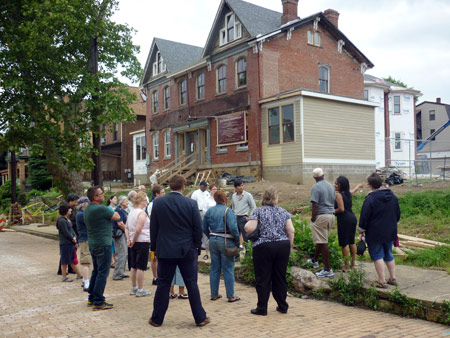
Participants of a walking tour get a look at the Wilson Building on Jeannette Street in Wilkinsburg, which is being restored by the Pittsburgh History & Landmarks Foundation and converted into rental units for low-income families. Kim Leonard | Tribune-Review
Broken glass still mars one side of the Crescent Building, which fills about one-third of a block in Wilkinsburg. But most of the windows are new, signaling that the century-old building will be ready for apartment tenants before long.
The Pittsburgh History & Landmarks Foundation led about 20 borough residents and leaders, plus others interested in how its housing restorations in the Hamnett Place neighborhood are progressing, on a walking tour after an open house on Saturday.
The century-old, red brick Crescent structure off Rebecca Avenue once contained shops and other businesses, plus apartments, but had decayed for decades. That three-story building plus an apartment house, known as the Wilson Building, on adjacent Jeanette Street are being converted to 27 rental units for low-income families, under an $8.6 million project by the foundation set for completion in the fall.
The foundation has restored and sold single-family homes and is working on three more. Its Landmarks Housing Resource Center, which opened in October in a former Packard auto dealership, is scheduling programs to advise residents of Wilkinsburg and other communities on how to maintain and improve their historic homes.
“The idea is for people to take up where we end, on their own,” said Karamagi Rujumba, with the foundation`s real estate development section.
Initial work in the neighborhood is spurring changes, said Josie Bryant, a Wilkinsburg resident and social director at St. James Church, one street away from the Crescent Building. Some Hamnett Place neighbors are adding gardens or otherwise sprucing up their homes.
A neighborhood association and church leaders, worried about abandoned, decaying buildings, approached the foundation and Allegheny County officials several years ago for help, she said. Now that some projects are being completed, “The result is that the people have an interest” in making the area better, Bryant said.
The Crescent and Wilson buildings were on a residents` list of critical buildings to be saved, said Michael Sriprasert, the foundation`s director of real estate development.
Original features such as bay windows are being kept in the Crescent and Wilson structures, and the foundation is maintaining a community garden next to the Wilson apartments site. Restorations at two homes on Holland Avenue and one on Jeanette Street should be completed in about three weeks; they`ll be sold to families that meet income limits, said Dave Farkas, director of Main Street programs for the foundation.
A total of $11.6 million in funding for projects in the borough came from the Pennsylvania Housing Finance Agency, the Scaife Foundations, PNC and Allegheny County.
-
Preservationists Praise Rehab Plan for Old Morgue
By Craig Smith, PITTSBURGH TRIBUNE-REVIEW
Friday, March 11, 2011http://www.pittsburghlive.com/x/pittsburghtrib/lifestyles/s_726879.html
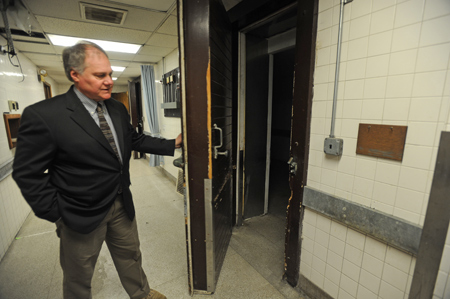
Sam Taylor, principal architect/building manager for Allegheny County department of public works, gives a tour of the old Allegheny County Morgue before it undergoes a $4 million renovation. James Knox | Tribune-Review
As a 14-year-old growing up in Oakland, Sam Taylor went to the Allegheny County Morgue at the urging of his friends to see the bodies on display.
It was a tradition for generations of Pittsburgh teens, he said. Some even took their prom dates.
“When you’re 14, you think you’re invincible,” said Taylor, 59, of Mt. Lebanon. “There was this yellowish light, and the bodies were kind of leaned back.”
Taylor, the county’s principal architect/building manager, is overseeing a $4 million renovation of the former morgue. The building, completed in 1903, was moved the length of a football field in 1929 to make way for the County Office Building.
Allegheny County expects to seek bids for demolition inside the building in late April or early May. That will create an additional 30,000 square feet of office space, while preserving many of the building’s unique features. The plan is to reuse transoms, stair railings and courtroom banisters, Taylor said.
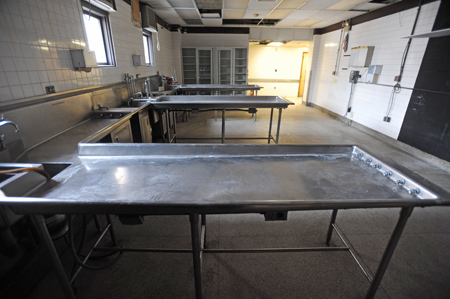
The autopsy room inside the old Allegheny County Morgue will be transformed into a new use. James Knox | Tribune-Review
A $900,000 project that included installing a terra cotta roof and masonry work was completed in 2006.
Officials haven’t determined who will use the space.
“We have a number of departments using leased space, including the Law Department and Economic Development,” said county spokesman Kevin Evanto.
Architect Paul Apostolou, who made a trip to the morgue when he was in high school, said a big part of the project will be undoing the “sledgehammer and hacksaw” approach to renovations over the years.
Preservationists praise the effort.
“I think they are trying to treat it very well for a building that no longer suits its original purpose because of modern technology,” said Arthur Ziegler, president of Pittsburgh History & Landmarks Foundation. “It’s a notable building in the government complex.”
The city designated the Frederick Osterling-designed building as a Pittsburgh landmark in 2002. Osterling, one of Pittsburgh’s premier architects, designed the county jail expansion of 1904 and Union Arcade (1915-17), which became Two Mellon Bank.

The "chapel" of the vacant old Allegheny County Morgue Friday was a place of prayer in a somber place. James Knox | Tribune-Review
The morgue building was designed to visually match the jail and courthouse, but by 1929, county government needed more space, according to a history of the building compiled by History & Landmarks. Officials decided a consolidated office building on Ross Street between Forbes and Fourth avenues would be the most efficient. That forced them to relocate the morgue.
The move was an enormous undertaking that took about three months. Work inside the building by the coroner and his staff continued without interruption, though. Temporary gas, water and sewer lines were connected and maintained on a 24-hour basis.
Huge timberwork and steel rails were used to move the building, which had to be lifted to the same height at the same moment. That ticklish maneuver was carried out by 100 men from a Balkan tribe — specialists in moving buildings from the “old country.”
They manned screw jacks that they gave a quarter turn every time a whistle sounded, until the three-story building was 27 feet in the air. It then was moved onto a system of beams designed by Kress-Oravetz Co. and slowly, laboriously pulled by cable to the foundation at 542 Fourth Ave.
Once there, Taylor said, they had to “shoehorn” the building between two structures.
In 2005, voters approved a referendum that eliminated the coroner as a row office, returning it to its early roots as an appointed position, now called medical examiner. The medical examiner’s office relocated in 2009 to a building in the Strip District.
-
Historic Designation Rejected for Civic Arena
Wednesday, March 02, 2011By Mark Belko, Pittsburgh Post-GazetteThe city Historic Review Commission refused to designate the Civic Arena a city historic structure today, a setback for those seeking to save the old building.
The panel voted 6-0 to reject the building’s nomination, reversing an earlier decision to designate the arena as a historic structure.
It followed the same pattern that occurred in the early 1990s when the commission gave preliminary approval and then rejected it in a final vote.
The decision is a setback for local preservationists who have been trying to stop the demolition of the 49-year-old arena. It is a victory for the Penguins, who want to use the site for housing, offices and shops.
Before he voted, Ernie Hogan, the commission’s acting chairman, said he did not think the arena met any of the 10 criteria for nomination.
Rob Pfaffmann, leader of Reuse the Igloo, said afterwards he was very disappointed with the decision but would continue the battle to save the structure.
The fight is far from over. The city planning commission and ultimately city council still must take up the nomination.
-
Fairview Park in Delmont Gains National Historic Status
Thursday, February 24, 2011By Laurie BaileyFairview Park in Delmont Gains National Historic Status
It’s important for retired history teacher Barbara Calloway that her children and grandchildren realize the impact of Salem Township’s Fairview Park on her own family and a generation of area African-Americans.
“They really can’t imagine the whole segregation thing. It’s part of our integrity, our history and part of who we are,” she said.
The park was selected earlier this month to be on the National Register of Historic Places. It was developed in 1945 by the Monongahela Valley Sunday School Association — a group of African-American churches from Westmoreland and Allegheny counties. At a time when segregation restricted access to other public amusement parks, Fairview Park was a place the African-American community could call its own.
“The designation is a recognition of what the people who founded the land had to go through,” Fairview Park Association president Ernest Jackson said.
The idea for a safe, welcoming place for African-American families, many from urban communities, to have fun and fellowship was actually conceived in 1918, Mr. Jackson said.
“No banks were lending money for land to black folks at that time,” he said. A banker himself, Mr. Jackson is vice president of operations for Dollar Bank.
People put up their own cash, even mortgaged their homes to develop the 100 acres of land where a roadside gas station and restaurant once stood along Route 22. “It wasn’t an easy transaction,” Mr. Jackson said.
By the 1940s and 1950s, the park established itself as the first African-American-owned amusement park and the place to go for church picnics and other gatherings. In its heyday, it featured a roller coaster and merry-go-round for small children, a swimming pool, softball fields, playground equipment, petting zoo and even hot air balloon rides.
“We took our picnic baskets and visited. The church picnic was the highlight of the year,” said Mrs. Calloway, of Point Breeze. Most churches had buses to transport those without cars to the Westmoreland County park.
“If you trace the history of the Civil Rights movement, you could determine when the park was most popular,” Mr. Jackson said.
Attendance started to decline in the late 1960s with the Civil Rights movement.
As money was needed throughout the park’s history, parts of the land were sold, including 33 plots that created the first black community in Salem Township. Part of the land was sold to pay real estate taxes — a cost that should have never occurred, Mr. Jackson said. Because the proper paperwork had not been filed, tax-exempt, non-profit status wasn’t official until 1998.
Now the association’s goal is to develop the park, which is still functional and used by a variety of groups. Costs for maintaining the existing 52 acres come entirely from donations, mainly from the dozen or so churches actively involved in the association. Volunteers cut the grass and do repair work.
But significant funding is required to meet the park association’s short term plans for updating the existing three shelters and bathroom facilities, playground equipment and ball field. The group is hoping to find someone to offer expertise in grant writing, Mr. Jackson said.
Along with its new national historical status, the park is eligible for consideration in federally assisted projects and qualifies for federal grants for historical preservation when funds are available, according to the website for the National Register of Historic Places: www.nps.gov/nr.
The association has a dream of further developing the park into a retreat center, providing facilities for church groups and businesses.
“With over 50 acres of land, there are many things we could do,” Mr. Jackson said.
But for now, as in the early days, church picnics successfully prevail, introducing today’s children to old-fashioned traditions like sack races, baking contests and bingo.
“They are things that kids don’t do now, but once they catch on, it gets competitive,” Mr. Jackson said.

